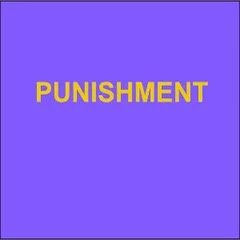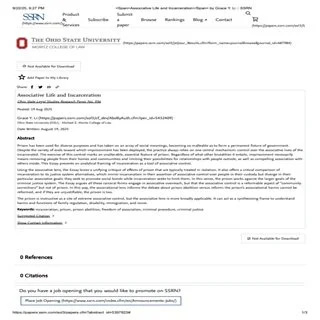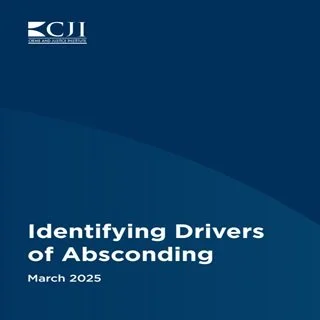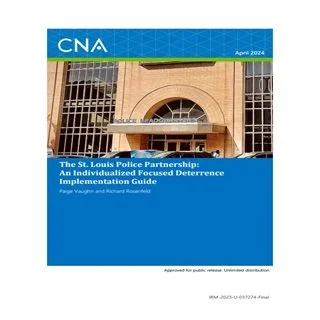By David Spencer
We need more prisons. Amongst the “small stratum of intellectuals, semi-intellectuals and hooligans” who have a “politically motivated contempt for law and order” , it may well be fashionable to suggest otherwise. However, a lack of prison places has led to the Government choosing to release prison inmates earlier than they would otherwise have been. Police officers have been instructed to consider “pausing” arrests due to the lack of prison space. The judiciary have been told to consider prison capacity limits when sentencing those convicted of criminal offences. The most prolific offenders, when convicted of ‘indictable-only’ or ‘eitherway’ offences, are imprisoned on only 46.2% of occasions. A substantial majority of the public, 80% according to recent polling, believe the country should build more prisons. The Labour Party’s 2024 General Election Manifesto said: “Labour recognises that prisons are of national importance and therefore will use all relevant powers to build the prisons so badly needed.” In this report, we outline: 1. The current state of the prison estate and Prison Service: demonstrating that the English and Welsh prison system is in an utterly parlous state and as a result failing across almost every aspect of its core purpose. A wholesale change in leadership and culture across the Prison Service is required. 2. How many more prison places the system requires: recommending a substantial increase in the size of the prison estate with an additional 43,000 prison places (and an additional 10,000 prison cells to eliminate overcrowding) over the next decade. 3. The costs involved: to deliver the substantial increase in the prison estate, we recommend a reallocation of funding from other Government departments, with an increase in public spending on prisons of approximately £6.5bn in capital expenditure and approximately £1.7bn in annual resource expenditure. 4. The necessary changes to the regulatory regime: the Government has announced that it intends for prisons to receive planning permission through the Crown Development Route in order to reduce the amount of time taken for new prisons to receive planning permission. All future prisons should receive planning permission through this route. 5. What type of prisons the Government should deliver: the substantial prison building programme we propose will require an expansion of all types of the male prison estate, with new standards in the design and a shift in the location of the estate to ensure that every prisoner is able to undertake the necessary training, education and rehabilitation we envisage. Building a new generation of prisons is a challenging prospect. A great, or an even greater challenge, will be simultaneously creating a prison system which treats those in the State’s care in such a way that on release prisoners have a greater chance of leading productive lives, without continuing to commit crime. Properly incentivising prisoners towards such an objective is vital – that is why we condemn the current practice of automatic early release for almost all prisoners. We recommend a shift to a system of ‘earned early release’. In addition, the Government should examine previous recommendations in this domain made by Policy Exchange – relating to sentencing reform, prison reform and a bolstering of the entire community sentence regime.8 On additional funding: there is no scope to increase overall government spending. So any increase in funding to finance additional prisons must come from reductions in other sorts of public spending. This paper does not lay out in detail what other spending ought to be cut, but with government spending as a share of GDP at a post-war high, there is ample scope for the level of savings that would be required. Civil service staffing, the benefits bill, overseas aid and the regime for uprating pensions should all be reviewed. This Labour Government has come to believe that it has only a ‘narrow path’ to tread when it comes to law and order. On one side maintaining the confidence of the law-abiding majority; on the other acting in the interests of the ‘stakeholders’ and noisy activists who seek a more ‘progressive’ approach to those who choose to commit crime. This is exactly the kind of challenge that Labour Party strategists will have to navigate amidst its own internal ‘coalition politics’. It is also a debate which readily plays out in the Parliamentary Labour Party. On one side are those MPs, often hailing from the ‘Red Wall’, who understand that only a Labour Party that is “tough on crime, tough on the causes of crime” has any chance of retaining and winning support beyond a narrow sliver of ultra-progressives. On the other side are the Labour MPs who have, amongst other activities, vigorously campaigned against joint enterprise laws (which are key in the fight against crime) and claimed that some communities are “over-policed” despite those communities simultaneously being ravaged by knife and gang crime. Labour’s challenge in Government is to show to ordinary working people that it understands that the greatest threats they face come not from State oppression in the form of more prison places, but rather from an insufficiency of law and order – thus empowering the criminals and gangs who wilfully immiserate their lives. Too often Ministers, senior civil servants and the judiciary are insulated from the real-life consequences of their decisions relating to law and order. Many do not live or walk on dangerous and messy streets, or have to live next to those who have made criminality and anti-social behaviour a way of life. If Government wishes to genuinely serve the public – the vast majority of whom are living productive and law-abiding lives – Ministers must recognise that a less permissive environment for crime is required. Central to that is that the minority of people who do commit most crime should be far more likely to be in prison than is currently the case. This report shows Ministers how to deliver on a core element of such a plan
London: Policy Exchange 2025. 55p.





















